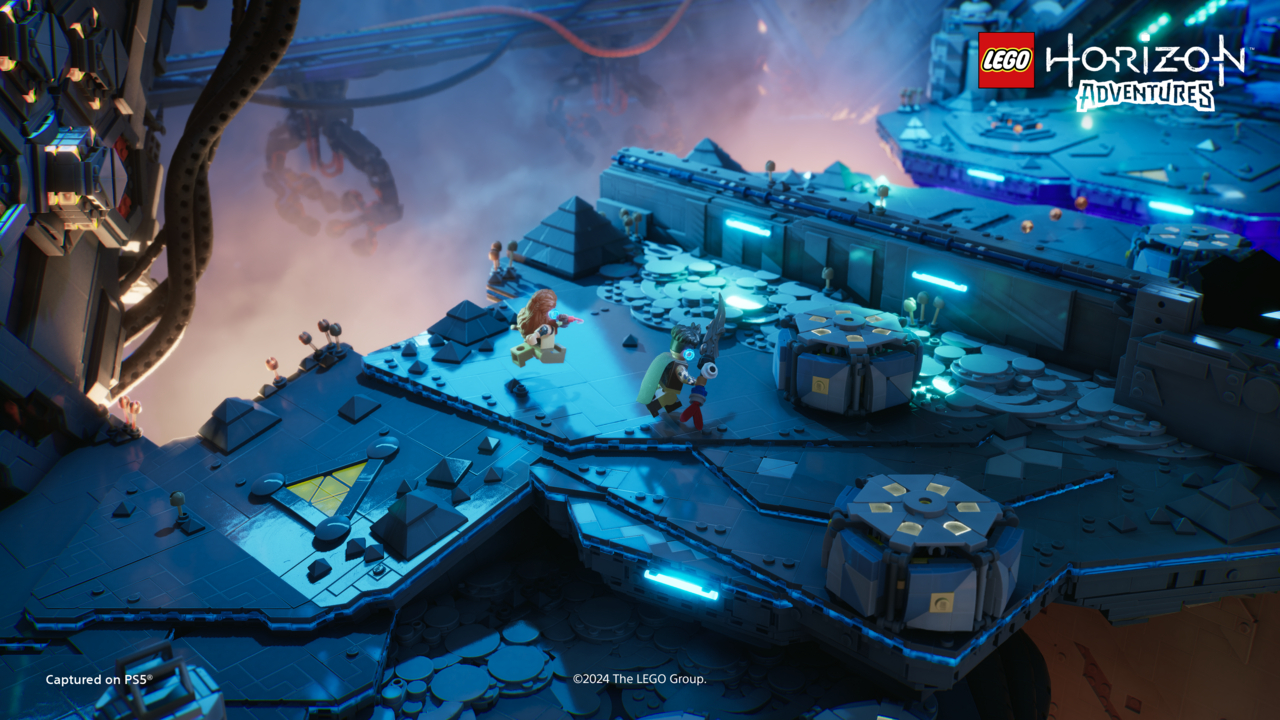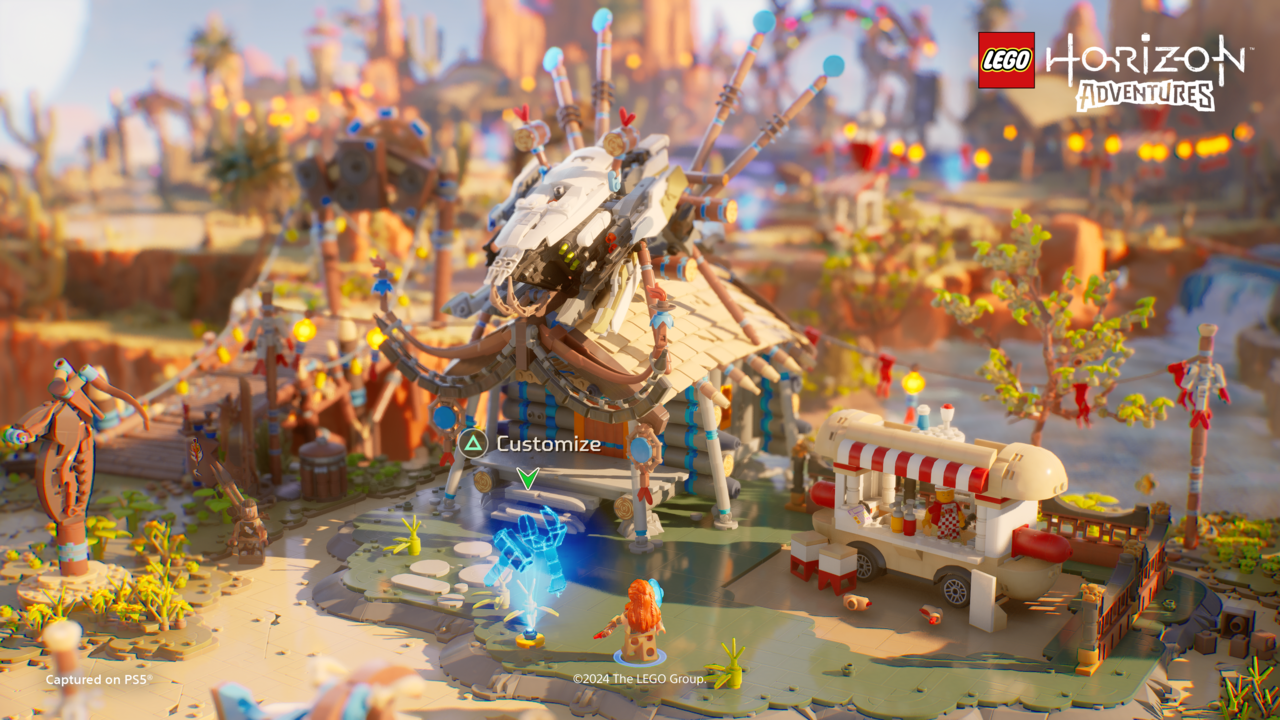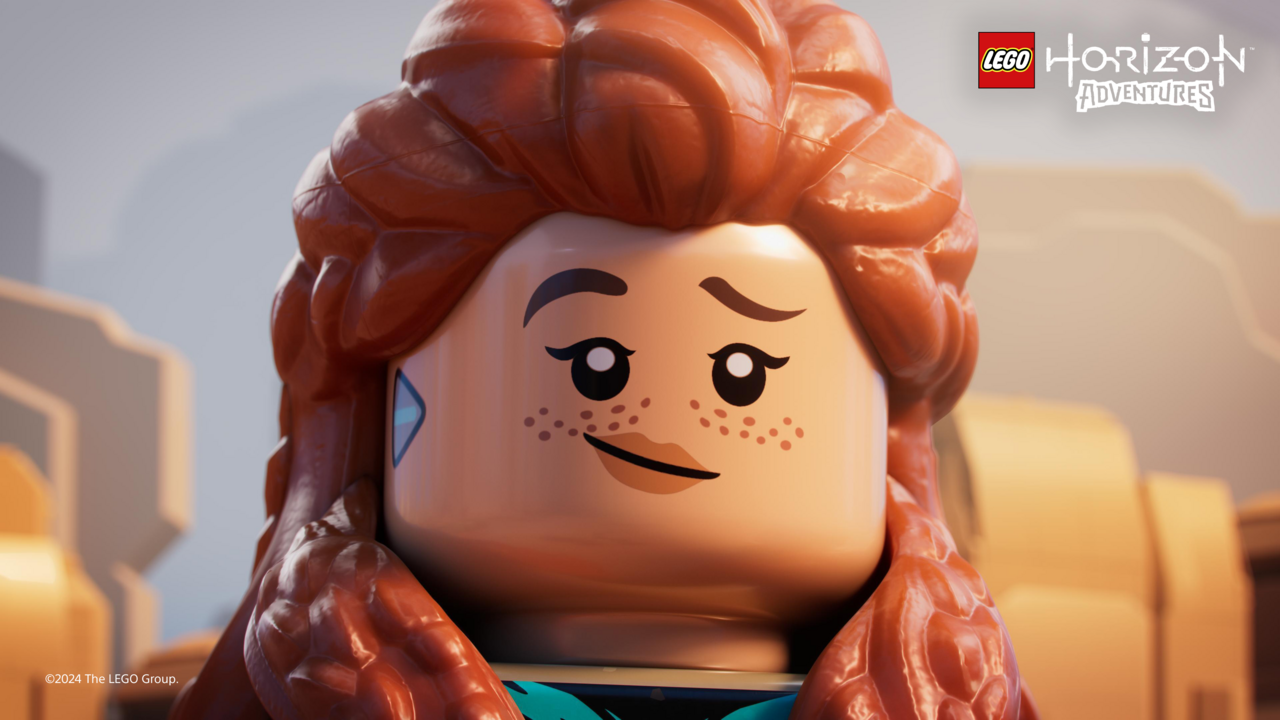The fundamental elements of a Lego game have remained largely unchanged for more than two decades: crush everything into bricks and studs, collect dozens of characters, and use those characters to jump back into levels to solve puzzles that were previously closed. Lego Horizon Adventures has a little bit of that DNA, and returning to a fixed camera like the pre-Skywalker Saga games makes it seem like a classic Lego game of yesteryear, but after 30 minutes of play in single player and co-op, I came away considering it the most cinematic Lego game yet. Instead of focusing intensely on destroying and collecting things, the emphasis is on Guerrilla’s story – and that story is put through a kid-friendly filter.
“We were determined to create a Lego game that was unlike any other Lego game,” James Windeler, narrative director at Guerrilla, told me after my hands-on session. “From a visual perspective, we wanted to make a statement in the sense that we wanted to create a playable Lego movie in terms of visual quality. But one of the things that’s really unique about it and very different from other games is that everything You see, every item can be made from physical material, from Lego pieces.”
He’s right, of course. Traditionally, Lego games feature bricks in the playable area and backgrounds made to look more like traditional video game environments, and that difference here, combined with the beautiful visuals, really makes Lego Horizon Adventures stand out the moment you see it.
But playing them also feels a little different from classic Lego games. Sure, you can destroy some of the environment to collect studs, but not nearly as many as in other Lego games, and there didn’t seem to be a stud counter requiring you to unlock a status, such as “True Adventurer.” That’s because this isn’t really a collect-a-thon like Lego Batman or Lego Star Wars. It’s, as Winderler says, like playing a Lego movie starring Aloy, Rost and other stars of Horizon Zero Dawn.
And I specifically mean Zero Dawn. Lego Horizon Adventures reshapes the 2017 game in significant ways to be more engaging and suitable for kids, but without completely reimagining the story. “It’s not a faithful retelling, nor is it a parody,” explained Windeler, who said players will need about 7 to 8 hours to complete the game, although there are elements of replayability that will be revealed later. “We wanted to poke fun at the IP; we wanted to use all the self-referential humor that characterizes Lego properties.
“We were also really keen to make sure the game had very broad appeal […] We didn’t create the entire open world game and put it here. We told a story that we felt captured some of the spirit of the original, some of the themes […] It’s more of a source of inspiration.”

Considering that these themes originally included things like climate change and companies’ habit of pushing a dilemma in order to present a solution before things get any worse, I wondered how much of the game was specifically in those beats would go. “We definitely pushed some of the more complicated and really dark themes very much into the background. Those ideas are in the game, but they are very subtle,” he said. “You know, the story is set more in the present and mainly focuses on the more emotional story of a girl who is looking for her mother and is drawn into an adventure with existential stakes.”
Just as it translates the story and world into bricks and minifigures, one of the coolest parts of my demo was how it transforms the series’ weak-spot aiming system into a simpler version that less experienced players can more easily grapple with, especially on the Nintendo Switch’s small controllers. “A lot of thought went into that,” Windeler revealed.
“But we also wanted to make sure we kept the level of tactical thinking and fighting that fans of the franchise may have come to expect. So even though the control schemes are quite simple, you will recognize mechanisms such as [focusing] at the weak spot, but there is also a kind of complexity; there’s a difficulty slider, and as you move it up there’s a requirement to really get started on a tactical level.”
In practice, this involves holding the aim button on a machine’s parts while they glow bright yellow, just like in the traditional Horizon games, and then releasing it to hit the robot beast there. Players can also sneak around in the tall grass and even start forest fires that spread across the rock-filled landscape, causing chaos and sometimes even solving environmental puzzles.


And of course, in two-player co-op, all of these elements can be doubled down, creating a kid-friendly battle system that still feels more like an action-adventure game than a traditional Lego game, which leans toward a button-mad brawl. In one word, Winderler called Lego Horizon Adventures’ combat systems “frenetic.”
With Lego Horizon Adventures reimagining the story, whether it’s for a visual gag or just to make it a better gaming experience for the whole family, I asked if Guerrilla would ever shy away from the task of portraying a character like Aloy to take, about whom the studio has always spoken so highly. , almost turning her into a caricature of herself. But Windeler sees no conflict there.
“We do have single-player games, you know,” he said. “We’re still very protective of the characters in that canon, [but] everyone involved wanted to have fun with it. There are still some heartbreaking moments in the story. And we don’t completely skip the emotion of the original story. But it’s definitely meant to bring people joy.”
Lego Horizon Adventures arrives this holiday season on PS5, PC, and – yes – Nintendo Switch.
